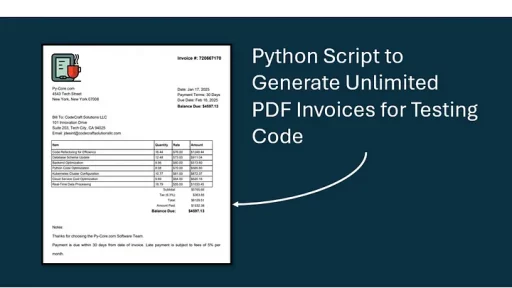When Python runs into an error, it stops running your program and prints a traceback. At the top of this traceback, you’ll see the message “Traceback (most recent call last).” Understanding this output is key to diagnosing and fixing problems in your code.
Let’s break down what a traceback is, why it exists, and how you can use it.
What is a traceback?
A traceback is Python’s way of showing the sequence of calls that led to an error. It lists each function call that was active at the time of the error, starting with the most recent. By reading it, you can trace back through the code to find where the problem started.
Python provides the traceback module in its standard library, which gives tools to interact with and manipulate traceback objects.
Key Definition
A traceback in Python is part of an exception object and includes:
- The call stack at the moment the exception was raised.
- The file names and line numbers where the error occurred.
- The functions or methods involved.
- Any associated error message or exception type.
Python’s traceback Module
The traceback module allows you to work programmatically with traceback information. It provides functions to extract, format, and print traceback details.
Here’s an example program called math_operations.py:
def divide(a, b):
return a / b
def calculate():
numerator = 10
denominator = 0
result = divide(numerator, denominator)
print(result)
calculate()When you run this program, you get the following output:
File "math_operations.py", line 9, in <module>
calculate()
File "math_operations.py", line 6, in calculate
result = divide(numerator, denominator)
File "math_operations.py", line 2, in divide
return a / b
ZeroDivisionError: division by zeroBreaking down the traceback
Tracebacks contain several parts:
- The Call Stack: This shows the sequence of function calls.
- File and Line Numbers: Each line specifies the file name and line number where the function was called.
- The Error Type and Message: This is the actual problem Python encountered.
Let’s examine the traceback above:
First Line:
Traceback (most recent call last):- This indicates the start of the traceback. Python encountered an error and is showing the sequence of events leading to it.
Call Stack:
File "math_operations.py", line 9, in <module>
calculate()
File "math_operations.py", line 6, in calculate
result = divide(numerator, denominator)
File "math_operations.py", line 2, in divide
return a / b- Each step shows a function call. At the bottom, we see the
dividefunction caused the error because of an operation in line 2.
Error Message:
ZeroDivisionError: division by zeroThis tells us the type of error (ZeroDivisionError) and the reason for it (“division by zero”).
How to use a traceback to debug
The traceback provides all the information you need to locate and fix errors. Here’s how you can use it:
- Start with the Error Message
Look at the last line of the traceback. It specifies the type of error and gives a hint about the problem. In our example, dividing by zero is not allowed in Python, which causes the ZeroDivisionError.
2. Follow the Call Stack
Trace the error back to its origin. In our example:
- The
dividefunction caused the error. - It was called by the
calculatefunction. - The
calculatefunction was called from the main block of the script.
3. Inspect the Code
Examine the code at each step of the call stack. Identify the logic that led to the error. In this case, the problem lies in passing denominator as 0 to the divide function.
Common errors and their tracebacks
Some errors occur often. Knowing how their tracebacks look can help you spot them quickly.
TypeError
If you use an object in a way that isn’t supported, you’ll see a TypeError. For example:
def add_numbers(a, b):
return a + b
add_numbers(5, "three")Traceback:
Traceback (most recent call last):
File "example.py", line 4, in <module>
add_numbers(5, "three")
File "example.py", line 2, in add_numbers
return a + b
TypeError: unsupported operand type(s) for +: 'int' and 'str'NameError
This occurs when you try to use a variable that doesn’t exist. Example:
print(value)Traceback:
Traceback (most recent call last):
File "example.py", line 1, in <module>
print(value)
NameError: name 'value' is not definedIndexError
This happens when you access an index outside the range of a list. Example:
numbers = [1, 2, 3]
print(numbers[5])Traceback:
Traceback (most recent call last):
File "example.py", line 2, in <module>
print(numbers[5])
IndexError: list index out of rangePractice reading tracebacks
The more you practice, the better you’ll become at understanding tracebacks. Try breaking code on purpose to see what kinds of tracebacks are generated. For example:
- Call a function that doesn’t exist.
- Pass incorrect types to a function.
- Try accessing a variable before defining it.
Thank you for reading this article. I hope you found it helpful and informative. If you have any questions, or if you would like to suggest new Python code examples or topics for future tutorials, please feel free to reach out. Your feedback and suggestions are always welcome!
Happy coding!
Py-Core.com Python Programming
You can also find this article at Medium.commedium.com/python-in-plain-english/deciphering-pythons-traceback-most-recent-call-last-aeea847bb34b


